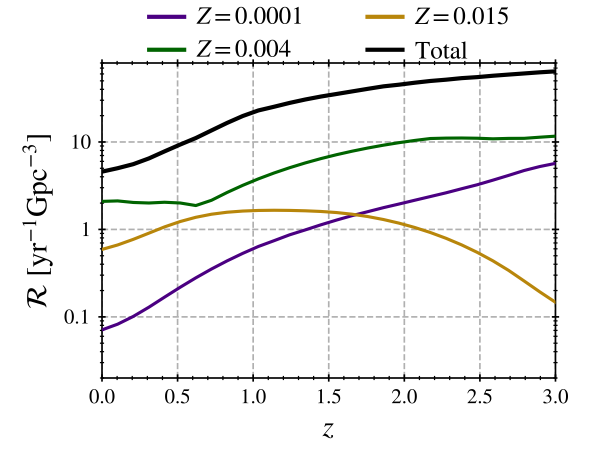Since the interferometers of the LIGO-Virgo collaboration detected gravitational waves from the merging of two black holes, black hole binaries have been among the celestial objects that most interrogate scientists. A team of astronomers, including researchers from the Astrophysics Department / AIM Laboratory of CEA Paris-Saclay and the APC laboratory (University of Paris), have determined, using more than 60,000 digital simulations of stellar evolution, the characteristics of the progenitors at the origin of mergers of black hole binaries of mass less than 10 solar masses. According to this study, a phase in the evolution of the binary system known as the common envelope phase plays an essential role in the process eventually leading, or not, to the merger of the two black holes. This work is presented in an article to appear in the journal Astronomy & Astrophysics.
From the merging of two stars to the emission of gravitational waves
Since 2015 and the detection of the first gravitational waves by the LIGO-Virgo collaboration, many other events have been observed by these giant interferometers, paving the way for gravitational astronomy. Researchers therefore have a new messenger to study the most violent phenomena in the universe. Among these phenomena, the mergers of black hole binaries, systems made up of two orbiting black holes, are of particular interest to researchers. The instruments of the LIGO-Virgo collaboration have repeatedly detected the gravitational waves emitted from the merger of two black holes. But many unknowns remain on the characteristics of compact objects as well as those of their progenitor.
The story of the progenitors can quickly be summed up as follows: two massive stars are born in the same interstellar cloud. Over the course of their lives, they exchange matter before, one after the other, imploding into a supernova after one or two tens of millions of years, thus finishing up as a black hole binary. These two black holes orbit each other and slowly approach each other for a few billion years before finally merging, producing a gravitational wave event detected by the LIGO-Virgo collaboration. The scenario nevertheless depends on many parameters such as the initial mass of each star, their composition, their orbital separation, or their spin.
A poorly understood phase, a numerical code
One step, poorly known but which seems essential, has to be taken into account: the common envelope phase which describes a relatively brief episode in the life of the stellar binary during which an envelope of gas completely surrounds the binary. During this common envelope phase, a large mass transfer takes place between the two stars and the orbit. It is also during this phase that the orbit of the binary system rapidly decreases, potentially leading to the process of merging the two objects.
In order to better understand the processes at play during the evolution of the pair of stars, the team of researchers used, and adapted by including the common envelope phase, the public code MESA, a tool for simulating hydrodynamic stellar evolution as well as interactions between each star. More than 60,000 hydrodynamic simulations of the evolution and fusion of stars meeting the specific conditions set by the researchers of this team have been carried out on the computing cluster of the APC laboratory at University of Paris.
Black hole binary fusion detection rate (/ year / Gpc^3) as a function of distance (z), for distinct stellar compositions (metallicity Z). The black curve represents the sum of the detection rates for the different stellar compositions.
The result of this simulation predicts merging rates between 0.2 and 5.0 / year / Gpc^3 in the local universe, corresponding to the annual detection of 1.2 and 3.3 detections for this type of merging of lower mass black holes, up to 10 solar masses. This rate is comparable to the gravitational wave events detected by the LIGO-Virgo collaboration during the first observation campaigns. This result supports the method used to study the stellar progenitors of candidate black holes likely to merge and manifest through the emission of a gravitational signal.
Diagram of the evolution of the progenitors of a black hole binary fusion according to this study. A first episode of stable mass transfer takes place before the formation of the first black hole, then a second episode of unstable mass transfer leading to a common envelope phase takes place. This common envelope phase plays a fundamental role, because only the progenitors surviving this phase are then able to merge in a time shorter than the lifespan of the universe.
Contact :
"Progenitors of low-mass binary black-hole mergers in the isolated binary evolution scenario" Federico García, Adolfo Simaz Bunzel, Sylvain Chaty, Edward Porter, and Eric Chassande-Mottin.
To appear in Astronomy & Astrophysics
http://arxiv.org/abs/2103.03161
• Structure and evolution of the Universe › High energy cosmic phenomena and astroparticles
• Department of Astrophysics (DAp) // UMR AIM






